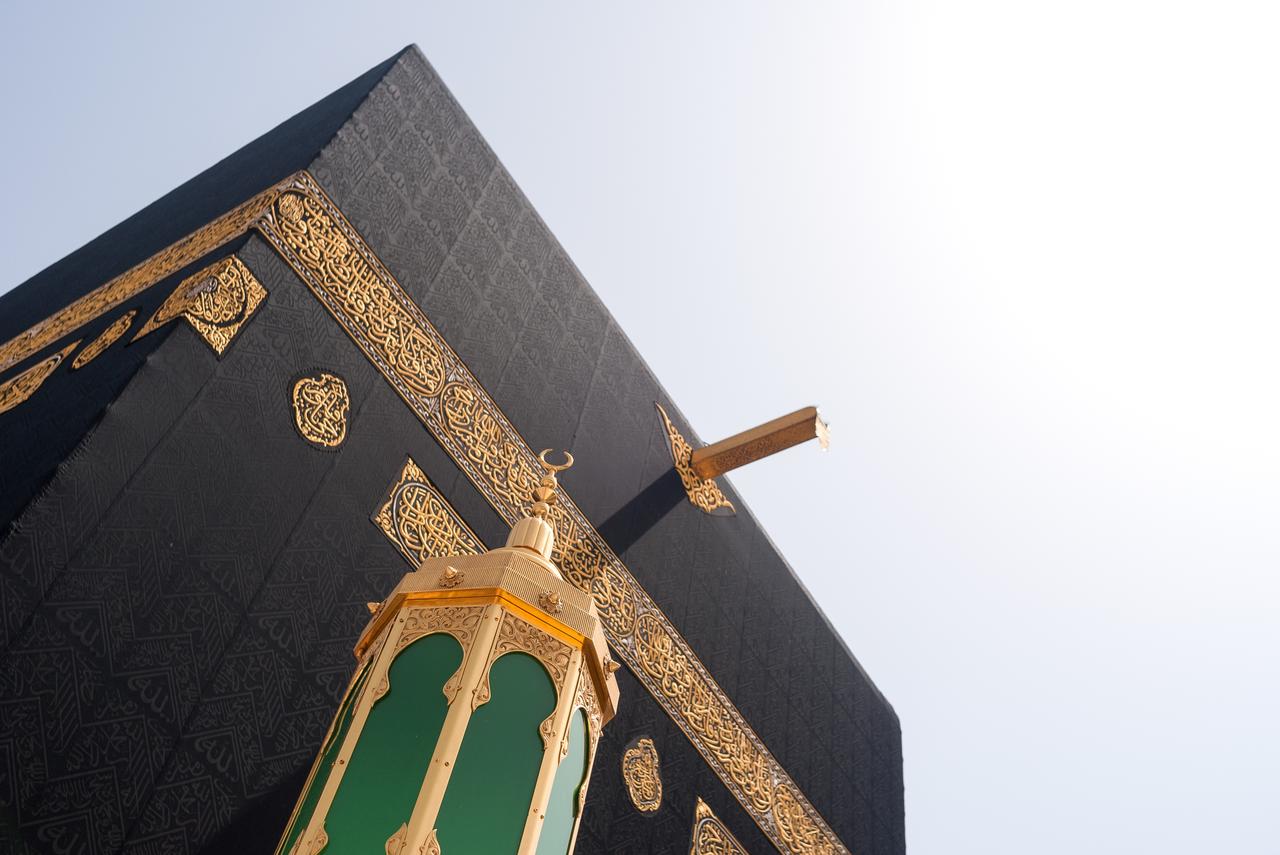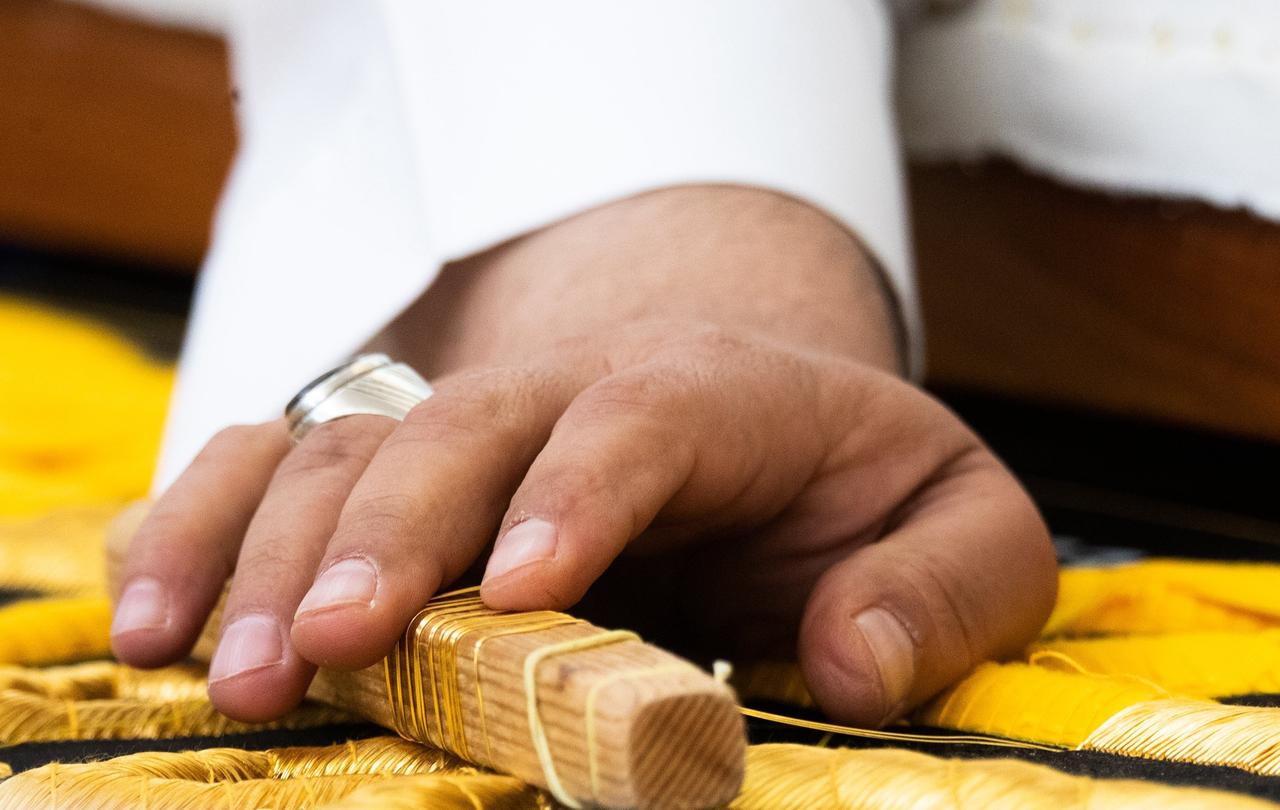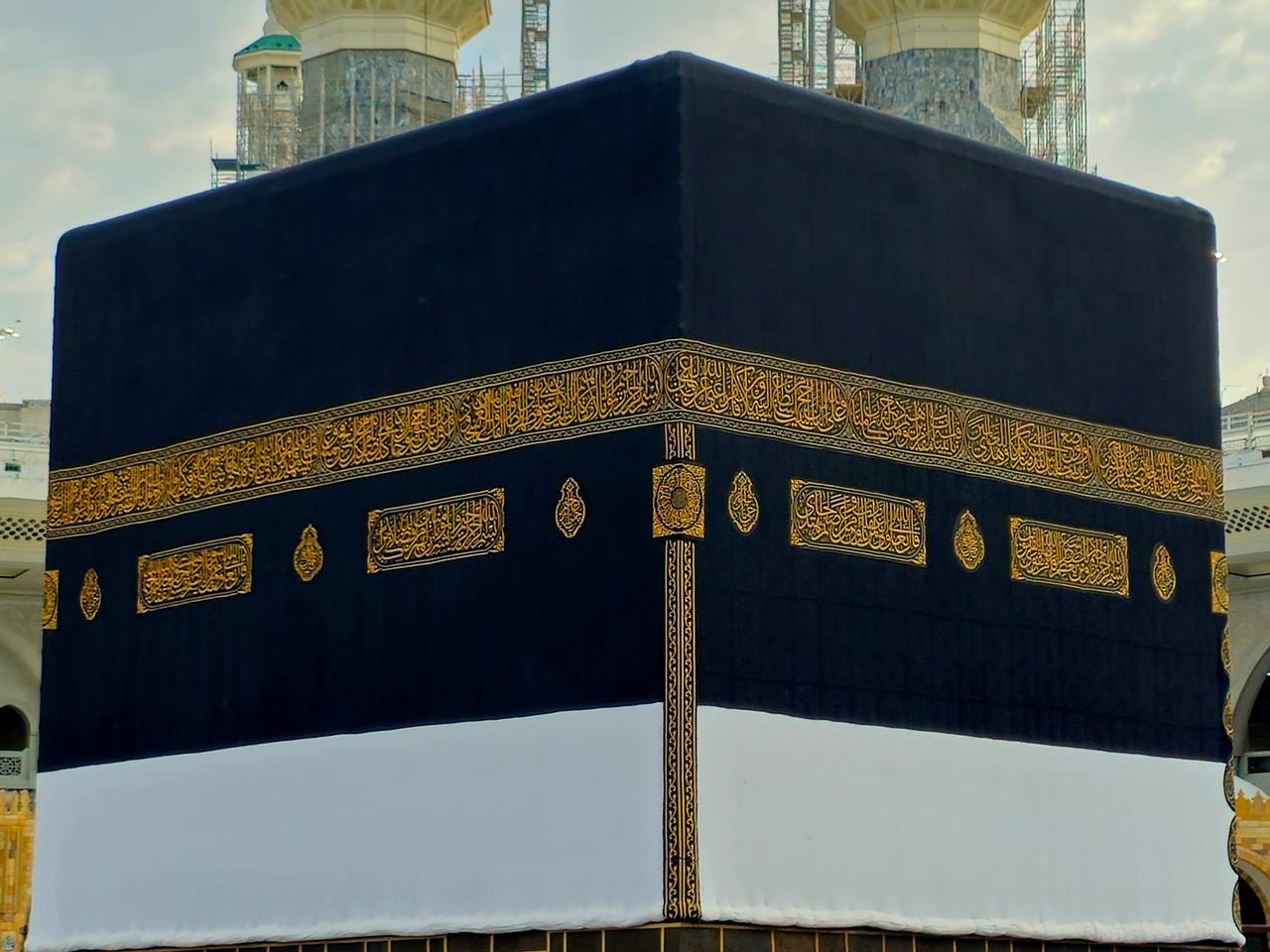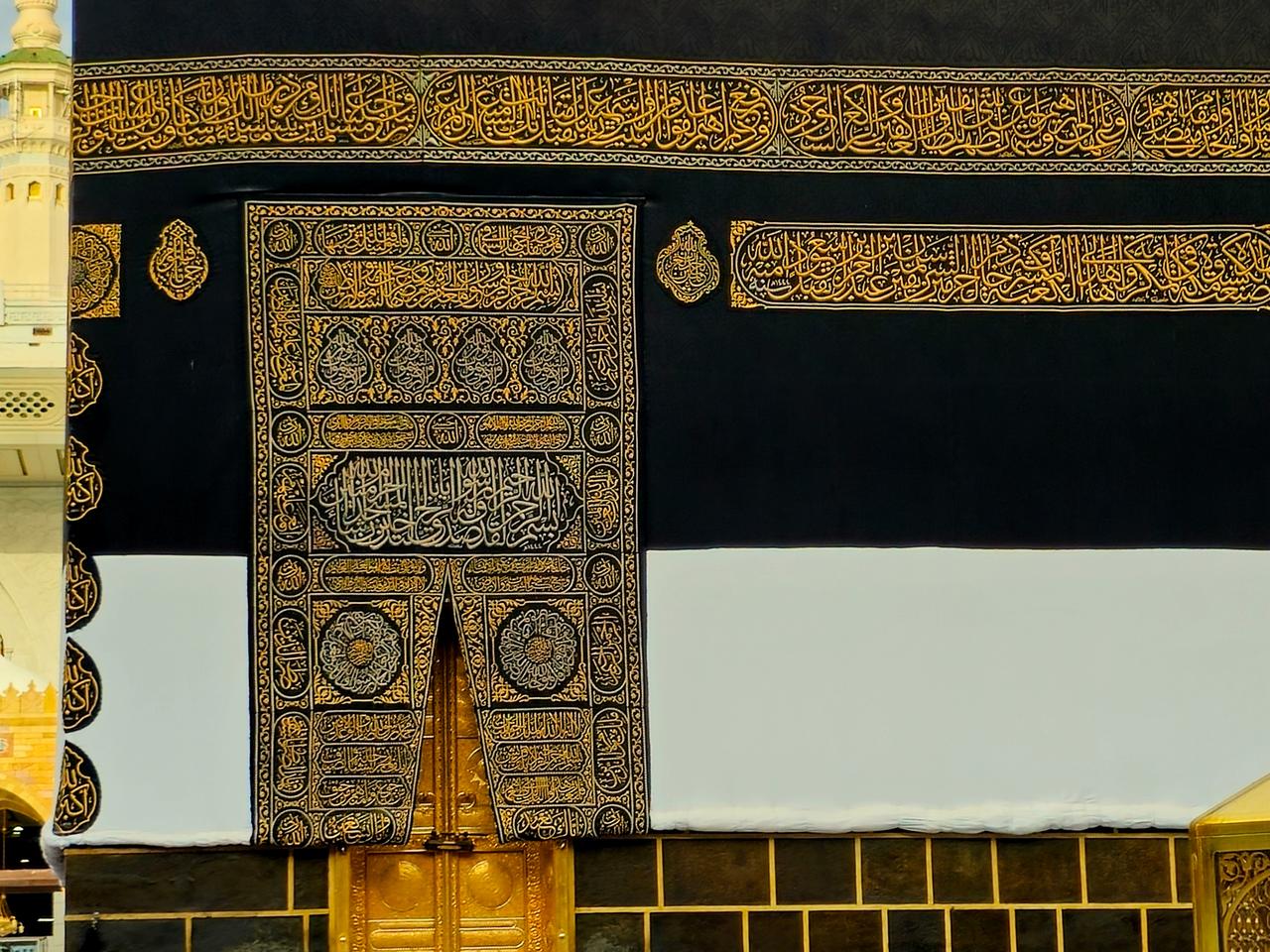
Every Hajj season, the eyes of the Muslim world turn to the Kaaba, where the most precious and sacred cloth on earth is renewed: the Kiswa of the Kaaba.
This masterpiece is priceless, combining human craftsmanship with deep religious symbolism.
It is made from natural silk imported exclusively from Italy and embroidered with pure gold and silver threads.

According to the Saudi Press Agency (SPA), raising the Kiswa—known as “Tashmeer al-Kaaba” or “Ihram al-Kaaba”—is not a religious ritual but is performed for reasons that have evolved over time.
In ancient eras, raising the Kiswa was a way to announce the approach of the Hajj season and mark the beginning of the sacred time, welcoming pilgrims from around the world to perform the fifth pillar of Islam. It also served to protect the Kiswa from tearing, damage, and wear during the busy season.
Over time, this practice transformed into an annual tradition overseen by Muslim rulers, whereby the cloth of the Kaaba is raised well before the Hajj season to prevent it from being torn or cut by pilgrims seeking a piece as a keepsake or blessing.
Historical sources indicate this custom dates back to the early Islamic period when raising the Kiswa involved folding the black silk curtain inscribed with Quranic verses upward, allowing pilgrims to see the Kaaba’s cover raised.
According to historical records, the practice of raising the Kiswa began during the Abbasid era, marking the first time the covering was lifted from the Kaaba walls to reveal a white cloth beneath resembling the Ihram garment worn by pilgrims.
This tradition is not an act of worship but aims to preserve the cloth from being torn due to crowding.
The Kiswa is raised approximately three meters from the base of the Kaaba around mid-Dhu al-Qi’dah, supervised by the General Authority for the Affairs of the Grand Mosque and the Prophet’s Mosque. The raised part is covered with a white cotton cloth measuring 2.5 meters (8.2 feet) wide and 54 meters (177.1 feet) long on all four sides, with the support of skilled national technical teams using the latest equipment and machinery provided by the Saudi government to complete the task efficiently.

Inside the King Abdul Aziz Complex for the Kiswa of the Kaaba, established in 1397 AH (1977 A.D.) under the supervision of the Saudi Ministry of Hajj and Umrah, the production of the Kiswa is carried out with utmost precision and reverence, reflecting the care for the Two Holy Mosques.
The complex covers more than 100,000 square meters and employs over 200 workers, technicians, and administrators across departments, including weaving, dyeing, printing, embroidery, and assembly. The complex continues a long historical legacy of Kiswa manufacturing.
The process begins with selecting the finest natural silk imported from Italy, which undergoes rigorous inspection before being dyed black in a specialized section of the complex.
The fabric is then woven both mechanically and manually on programmed looms to produce long strips that form the complete Kiswa.
Next comes the printing stage, where Quranic verses and ornamental patterns are transferred using screen printing technology in preparation for embroidery with gold and silver threads. This stage is one of the most delicate, requiring significant time and effort.

About 670 kilograms of natural silk and 120 kilograms (264.5 pounds) of gold and silver are used annually in making the Kiswa, costing more than $25 million (approximately $6.7 million).
This makes it the most expensive cloth in the world in terms of materials, spiritual significance, and value.
The Kiswa is replaced once every year on the Day of Arafah, with the Saudi government covering all costs, emphasizing its dedication to caring for the Two Holy Mosques, according to Ahmed Al-Suweihri, the media director of the Kiswa Complex.
In another SPA report, it was highlighted that the annual cost of the Kiswa, amounting to 25 million riyals, is fully funded by the state, represented by the Custodian of the Two Holy Mosques, King Salman bin Abdulaziz Al Saud.
The Kiswa is replaced every year after Hajj as part of administrative and spiritual rituals accumulated over more than a century of Saudi oversight. The production process takes a full 10 months.
Al-Suweihri described the Kiswa as a unique artistic masterpiece made from the finest materials worldwide.
He explained that the Kiswa withstands natural elements such as heat, wind, rain, and dust throughout the year without losing its luster. He added that the embroidery alone takes ten months of continuous work in preparation for the annual replacement.

Once production is complete, the stage of “Ihram al-Kaaba” begins, which involves removing the old Kiswa and installing the new one before the Day of Arafah, in a spiritual ceremony attended by dozens of technicians and specialists.
The four pieces covering the Kaaba’s sides are assembled and tied with the golden curtain known as the “Burqa,” which is fixed on the Kaaba’s door.
The old Kiswa is not discarded; it is cut into small pieces and gifted to official dignitaries and Islamic centers around the world, conveying a spiritual and diplomatic message that reflects the Kaaba’s significance in the hearts of Muslims.
The King Abdul Aziz Complex stands as a symbol of Saudi Arabia’s care for the Two Holy Mosques and opens its doors to visitors worldwide to witness the extraordinary stages of this unique work.
The Kiswa of the Kaaba is more than an embroidered cloth; it holds profound symbolism in the hearts of Muslims.
It mirrors the spirit of worship and monotheism and represents the unity of the Muslim Ummah around one Qibla.
Each thread blends history with faith and art with precision to present the holiest and most precious cloth that covers the House of Allah with reverence and grandeur.